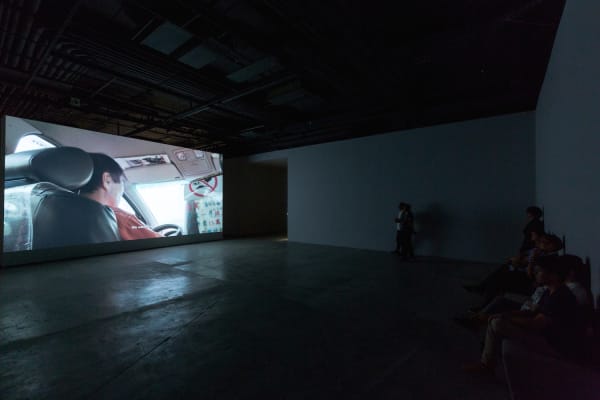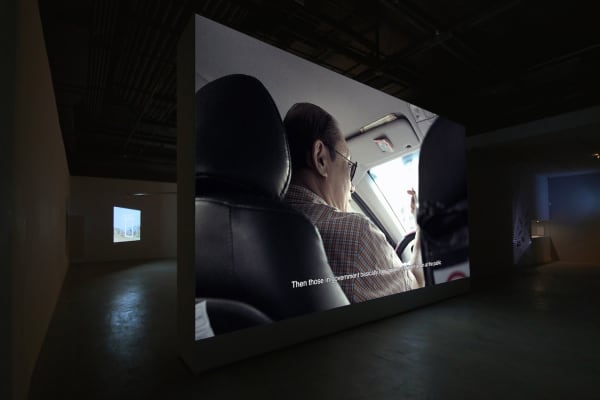Backseat Boulevard: Chia-En Jao Solo Exhibition
“You can see the direction, you know where you’re headed, but you have no control over how you get there,” Chia-En Jao spoke of his experience sitting in the back of a cab, which inspired the title of his solo exhibition Backseat Boulevard, on view at TKG+ from May 6 to June 25. It refers not only to the condition he was in when he rode the cab, but also the visceral experience he had when he saw how intricately history was intertwined with the present. In the transformation of historical writing into history, it is almost impossible for the author to shun the sifting of historical data and the influence of personal consciousness, turning the act of history writing into a wrestle between subjective consciousness and relative power. At the same time, the history that has undergone historicization becomes an ideology, a manifestation of political power.
Backseat Boulevard is a continuation of Jao’s interest in historical remnants and their reproduction in modern-day society. In addressing these issues, the artist unfolds different interpretations of history, questioning the established, official versions produced by the nation-state and media. This exhibition comprises three works, including Taxi (2016), which debuted at the Solomon R. Guggenheim Museum in New York in November 2016. Adopting a documentary style and a cinematic language, the video chronicles the conversations between the artist and cab drivers as they took him around Taipei to various locations that significant historical events took place, mapping the hidden contours of the geographical, historical, and ideological landscape of Taipei. The second piece is a series of watercolor works on paper through which the artist contests history, examines how history is being perused or traded, and weighs aesthetics against morality. Another piece is a video installation that grapples with the changing state of symbols and icons by documenting the first shrine in Taiwan that was restored and opened to worship since World War II through the assistance of Japanese priest Kenichi Sato.
Jao’s project-based practice stretches across different mediums, including drawing, performance, site-specific installation, and video installation. Pivoting around identity, marginality, aesthetics, and political systems, his work criticizes and responds to the fossilized system, or the values and ideologies which, shaped by social symbols, dominate history, society, the collective, and the individual.
Chia-En Jao
Chia-En Jao received his bachelor’s degree in fine arts from the Taipei National University of the Arts (2000), before he graduated from the École Nationale Supérieure des Beaux-arts in Paris (2004). Jao studied at Goldsmiths, University of London, where he received his master's degree in fine arts (2007), and attended a residency program in Paris in 2007.
In 2016, Jao was commissioned to create works that would enter Guggenheim’s collection as part of the Robert H. N. Ho Family Foundation Chinese Art Initiative. He was part of the exhibition Tales of Our Time at the Solomon R. Guggenheim Museum, New York in 2016.
In the recent decade, Jao has exhibited at international prominent institutions, including Parasite, Hong Kong (2016); Künstlerhaus Bethanien, Berlin, Germany (2015); National Museum of Art , Osaka, Japan (2013); QAGOMA, Brisbane, Australia; MOCA Shanghai, Shanghai, China; Taipei Fine Arts Museum, Taipei, Taiwan (2012); Museo di Arte Contemporanea di Villa Croce, Genova, Italy (2011); and Ludwig Museum, Budapest, Hungary (2010). The artist has also participated in notable exhibitions, including the 7th Asia Pacific Triennial of Contemporary Art, Shanghai Biennale (2012), and Taipei Biennial (2012, 2010).



















